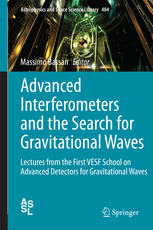

Most ebook files are in PDF format, so you can easily read them using various software such as Foxit Reader or directly on the Google Chrome browser.
Some ebook files are released by publishers in other formats such as .awz, .mobi, .epub, .fb2, etc. You may need to install specific software to read these formats on mobile/PC, such as Calibre.
Please read the tutorial at this link: https://ebookbell.com/faq
We offer FREE conversion to the popular formats you request; however, this may take some time. Therefore, right after payment, please email us, and we will try to provide the service as quickly as possible.
For some exceptional file formats or broken links (if any), please refrain from opening any disputes. Instead, email us first, and we will try to assist within a maximum of 6 hours.
EbookBell Team

4.3
18 reviewsThe search for gravitational radiation with optical interferometers is gaining momentum worldwide. Beside the VIRGO and GEO gravitational wave observatories in Europe and the two LIGOs in the United States, which have operated successfully during the past decade, further observatories are being completed (KAGRA in Japan) or planned (ILIGO in India). The sensitivity of the current observatories, although spectacular, has not allowed direct discovery of gravitational waves. The advanced detectors (Advanced LIGO and Advanced Virgo) at present in the development phase will improve sensitivity by a factor of 10, probing the universe up to 200 Mpc for signal from inspiraling binary compact stars. This book covers all experimental aspects of the search for gravitational radiation with optical interferometers. Every facet of the technological development underlying the evolution of advanced interferometers is thoroughly described, from configuration to optics and coatings and from thermal compensation to suspensions and controls. All key ingredients of an advanced detector are covered, including the solutions implemented in first-generation detectors, their limitations, and how to overcome them. Each issue is addressed with special reference to the solution adopted for Advanced VIRGO but constant attention is also paid to other strategies, in particular those chosen for Advanced LIGO.